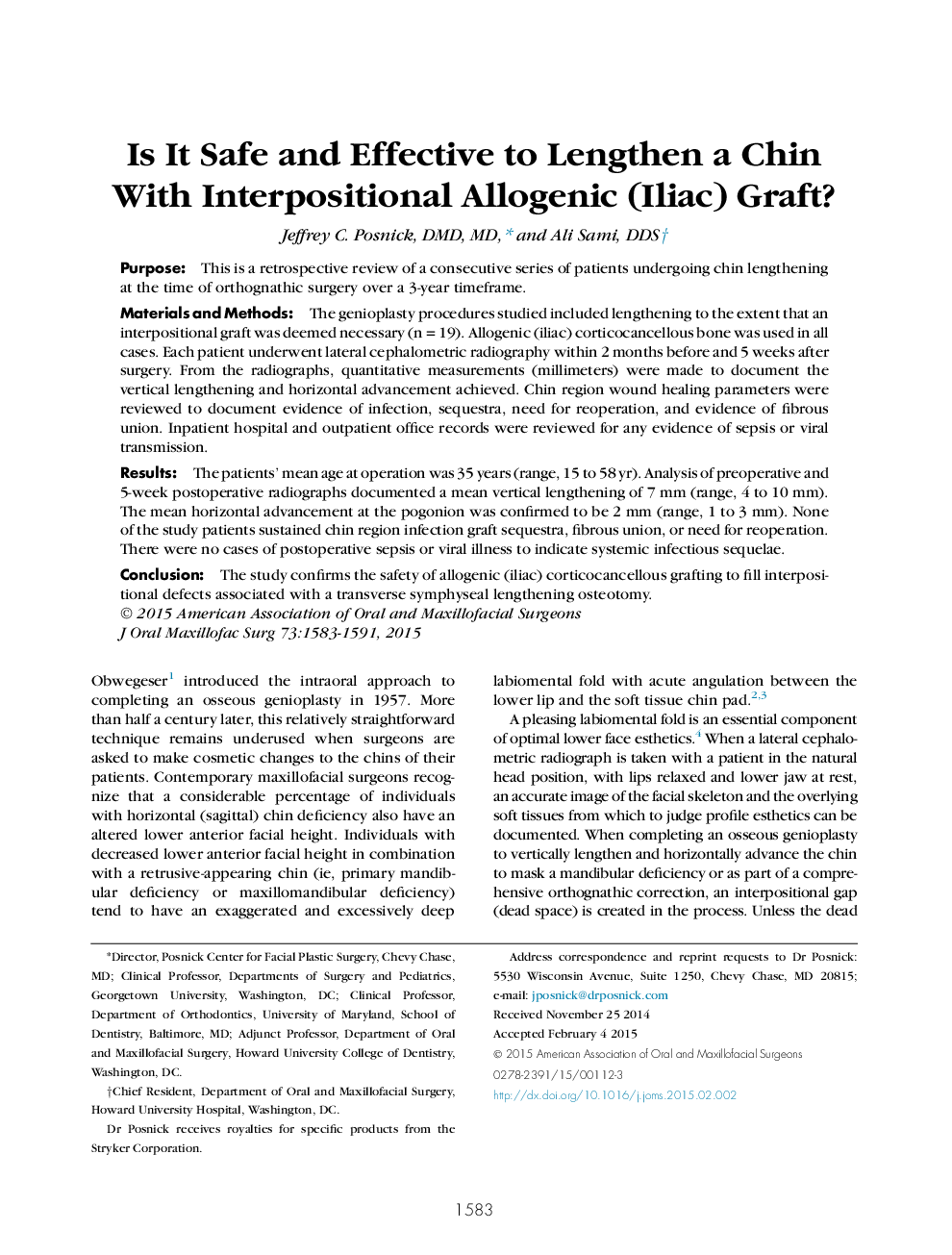| Article ID | Journal | Published Year | Pages | File Type |
|---|---|---|---|---|
| 3152332 | Journal of Oral and Maxillofacial Surgery | 2015 | 9 Pages |
PurposeThis is a retrospective review of a consecutive series of patients undergoing chin lengthening at the time of orthognathic surgery over a 3-year timeframe.Materials and MethodsThe genioplasty procedures studied included lengthening to the extent that an interpositional graft was deemed necessary (n = 19). Allogenic (iliac) corticocancellous bone was used in all cases. Each patient underwent lateral cephalometric radiography within 2 months before and 5 weeks after surgery. From the radiographs, quantitative measurements (millimeters) were made to document the vertical lengthening and horizontal advancement achieved. Chin region wound healing parameters were reviewed to document evidence of infection, sequestra, need for reoperation, and evidence of fibrous union. Inpatient hospital and outpatient office records were reviewed for any evidence of sepsis or viral transmission.ResultsThe patients' mean age at operation was 35 years (range, 15 to 58 yr). Analysis of preoperative and 5-week postoperative radiographs documented a mean vertical lengthening of 7 mm (range, 4 to 10 mm). The mean horizontal advancement at the pogonion was confirmed to be 2 mm (range, 1 to 3 mm). None of the study patients sustained chin region infection graft sequestra, fibrous union, or need for reoperation. There were no cases of postoperative sepsis or viral illness to indicate systemic infectious sequelae.ConclusionThe study confirms the safety of allogenic (iliac) corticocancellous grafting to fill interpositional defects associated with a transverse symphyseal lengthening osteotomy.
